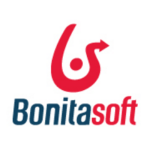What is our primary use case?
We use it for process or case management in the healthcare industry. We use it to make sure that, when a case moves between operators, that the right level of people approve the workflow. It causes the processes to pull the information back in, so we can redact the case appropriately.
When we started out it was a little painful, but as we adopted it to the healthcare industry practices that we have to follow, it has helped in faster development.
We don't use it with any other IBM products. We actually built our own processes for how applications behave, so we use the process engine piece of it to redirect the workflow appropriately. When a case or support ticket comes in to the customer service reps, we look at the information and, using the process engine, we figure out which process in the workflow we need to call to get the information back in. Then the customer service rep can use it to appropriately manage the case that they're looking at or investigating.
How has it helped my organization?
I'm not sure that it has improved our organization, per se, but the speed to market, delivery of our processes and rules that change constantly, it helps a lot with that.
Also, not having to build our own and customize it is another advantage.
In terms of impacting our ability to change or update our processes, we haven't gotten there yet. We are legally bound by what the rules are, and other issues, so there is only so much we can do, our hands are tied. But we are definitely looking at robotic process-automation, to see if that can help and solve some of our issues. We are going to be working with the IBM RPA team to see if any of those can be derived from the existing processes to benefit it. That is something we are looking at here.
What is most valuable?
From an architecture perspective, the thing that we like about it is the ease by which our development teams could pick the tool up. That was cool.
The Process Designer is good. We like how we can drag and drop and link the processes up, that works out great for us.
We also like the monitoring, support, and stability of the platform.
When we compare it, with respect to migration upgrades, we find it to be much faster and much cheaper than the other vendor. We have both products in-house, so we are actually evaluating from a price-comparison perspective, as well as from a development and skill-set-availability perspective, across the products, as well.
What needs improvement?
One of the things that we are looking at is cognitive learning. IBM has another product called IBM RPA, I think, which is doing some of that stuff. We would like to see more of that with respect to cognitive learning and AI put back into the process engine to help.
Buyer's Guide
IBM BPM
October 2025
Learn what your peers think about IBM BPM. Get advice and tips from experienced pros sharing their opinions. Updated: October 2025.
870,697 professionals have used our research since 2012.
For how long have I used the solution?
One to three years.
What do I think about the stability of the solution?
Process engines have been here for a long time now. When you look at IBM BPM it provides the same stability that most engines do today. I think it is more in terms of development time and the ease of learning it that helped us more.
It is not as heavy as a Pega workflow system which is customized and has a lot more things you can do with it, but we don't need that level of complexity.
What do I think about the scalability of the solution?
We haven't had any issues yet in terms of scaling it out to our customer service reps. You never know, it depends on the complexity, what it's going to look like in the future.
It's cheaper than Pega, definitely.
How are customer service and support?
I haven't personally talked with anybody yet in technical support. I don't think we've had a need to. From a design and consulting perspective we did reach out to IBM to get some help to improve our processes in terms of development; not the actual process engine though.
There is more stability in that team to deliver things faster, so that helps.
Which solution did I use previously and why did I switch?
We used Pega. Pega can be used both as a workflow engine and a process engine. We have our own internally built process engine too, written in Java, but it's more customized to a certain issue and we are not able to scale it out. That's why we looked at Pega and IBM BPM.
When looking at vendors - we sell a health platform to our clients, the Blue Cross and Blue Shields of the world - and one of the things we look at is, when we sell a platform, how can we reduce the cost of the platform, to reduce healthcare costs at the end of the day. We keep on evaluating products based on the licensing cost and the cost to run it, the consulting rates for each product.
We look at the scalability and stability of the platform too. We also look at what other capabilities there are, the capabilities of the future, and that's one of the reasons we are going towards robotic process-automation, trying to automate some of these mundane tasks that people have to perform manually. Although it is process-oriented, it is still difficult to figure things out across multiple applications.
How was the initial setup?
The initial set up was easy. The challenge was in adopting it into the release and deployment processes that we have in-house, what we have to follow for the healthcare industry. There was a little bit of a challenge trying to figure out how to take the process and put the appropriate release management processes in place to follow our auditing compliance.
We have ironed that out now and we are able to develop and showcase the product much faster when we compare it with something like Pega. Pega has a process engine that we use. Our development times are much faster in IBM BPM, as well as the pricing is even better than Pega.
Which other solutions did I evaluate?
We looked at Pega, it's very expensive in terms of licensing. We are now looking at Red Hat's implementation of the BPM tool to see, from a price point ratio, how it behaves as well. Red Hat has a business process engine, their JBoss BRMS does that, so we are evaluating it.
We do evaluate, over time, how we can reduce our internal cost to provide a better solution.
What other advice do I have?
In terms of advice to a colleague who is looking this or a similar solution, I think it is based on the needs of the company, overall, in terms of the business capabilities, the business development, is it a stable platform. And at the end of the day it's the total cost of ownership which is the key. You always have to look at that from your company's perspective. IBM BPM might be the best tool out there, but if you don't have the appropriate training and funding it's going to be a challenge. That's true of any other tool too.
That's why we're evaluating Pega and IBM BPM. Our teams are liking BPM better because it's faster to set up and they have showcased two or three projects where they were able to do them in a three-month cycle, where it really should take them seven or eight months, and it would take more in Pega. So we see the benefits, but we need to constantly look at technologies because, in the market, things are evolving over time, and that's one of the reasons we are looking at automating some of the processes too.
We evaluate every three to six months, to make sure we are ahead of the curve and looking at what the market is bringing to the table to reduce the total cost of ownership. So something like robotic process-automation where, with cognitive learning, it can figure out some of the processes and improve them automatically, is something that we are looking into big-time.
Disclosure: My company does not have a business relationship with this vendor other than being a customer.
















